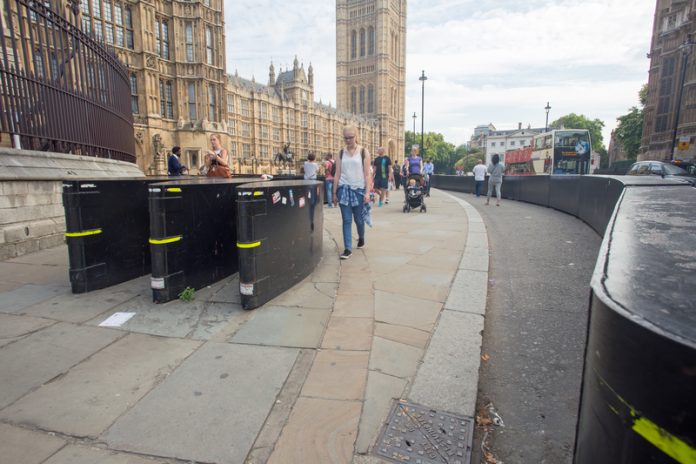Specialist defence and security writer, Tom Jones shares his views on the security dynamic around public spaces in the UK
The security dynamic around large public events in the UK is currently undergoing some real, drastic change. With a recent spate of attacks in public places, mostly involving vehicles, the UK public are having to get used to seeing highly visible measures like road barriers and armed security forces at events.
In recent times, particularly as ISIS has destabilised and becomes less attractive for terrorists to go and join, domestic terrorists have decided to stage attacks in their home country, rather than attempt to travel out to terrorist training centres or to join groups – which may alert authorities. They’ve also turned to more commonplace objects than guns or I.E.Ds to make an impact. They’ve turned to vehicles, as exhibited in attacks such as the 2016 Berlin truck attack and London, where Khalid Masood hit more than 50 pedestrians with a single vehicle.
Commercial vehicles do have a history of being used by terror groups and sub-state actors, the most obvious example being the ubiquitous Toyota Hilux, which is often mounted with a machine gun and known as a ‘technical’. In this form, it has served – and continues to serve – as a modern type of cavalry in countless low intensity conflicts across the world.
However, domestic terrorists have turned to vehicles for rather prosaic reasons. First, is that they’re easy to get hold of. Obtaining firearms – even illegal ones – is an onerous and expensive process in the UK, requiring licences or well-established, serious criminal connections. Hiring a van takes a driving licence.
Second, their acquisition arouses little suspicion. Someone buying large quantities of material known to be used in bomb-making within a small area is obvious. Hiring a white transit isn’t such an obvious alarm bell, especially if suspicious activity isn’t reported. Finally, terrorists want something deadly and effective. Large, heavy vehicles such as vans or lorries are both – they’re manoeuvrable, can travel at quite high speeds and are heavy, so they have a lot of momentum – which also means they’re difficult to stop. In even the most untrained hands, they present a deadly tool.
Therefore, we’re seeing so much security activity at public events now. Security forces are aware that now, any large group of people presents a serious target, so they’re taking serious steps to negate any potential threat.
The first major development is that the kind of anti-vehicle barriers we’ve seen outside the House of Commons are now becoming commonplace at major UK sites, having recently been installed in places like Windsor Castle and Buckingham Palace. Concrete antivehicle barriers are also being deployed in increasing frequency to protect event spaces.
The first reason is obviously that they present a stopping force to any vehicle; they also allow police or security forces significant vehicle access prevention powers. Keeping traffic away from a site is the most obvious and most effective tactic to prevent vehicle attacks. If large areas around a site are pedestrianised, then any attempt to stage an attack is made more obvious and security forces are also given more time to react.
The second development, which is equally visible, is the increasing deployment of armed police. British ‘bobbies’ used to be infamous as the unarmed police force, but the fact is that the evolving security threat means this level of armament is nowhere near sufficient. Armed police officers are far more able to take control of a situation; if a vehicle is judged to be a threat, a carefully aimed round can disable the driver, preventing them from staging any further attacks once the vehicle is stopped.
British Police use a variety of firearms, the most common of which is the Heckler and Koch MP5SF. This is a highly accurate, reliable weapon that is ergonomically designed for rapid and sudden use; all British Police MP5s used are single fire or semi-automatic only. Hollow-point rounds are also used to prevent over-penetration, that is rounds passing through a target or wall, which may cause collateral damage. British police also use a range of firearms using the larger 5.56×45mm NATO cartridge, which have significant stopping power and can easily break the protective glass of a windscreen in front of a target.
Finally, of course, what you can’t see is the doctrinal development that security forces will have undergone. Measures have become clearer as security operators have sadly become more familiar with the problem and all security measures are deployed with totally joined-up thinking to negate threats and armed security police also undergo almost ceaseless firearms training. It is important to remember that armed police and road barriers are not just physical security measures – they are also deterrents. The highly visible presence of anti-terrorist measures may occasionally raise eyebrows from passers-by, but they also serve to highlight preparedness to potential terrorists.
Tom Jones graduated from Hull University in 2016, where he studied History and Politics, specialising in military strategy. He has written defence articles for a range of media outlets and is currently writing a book on British Counter-insurgency tactics during the Malayan Emergency. He also writes occasional field sports, agricultural and motorsport articles and lives in Yorkshire.
Tom Jones
University of Hull, School of Politics, Philosophy and
International Studies, Graduate Student
Specialist defence and security writer











